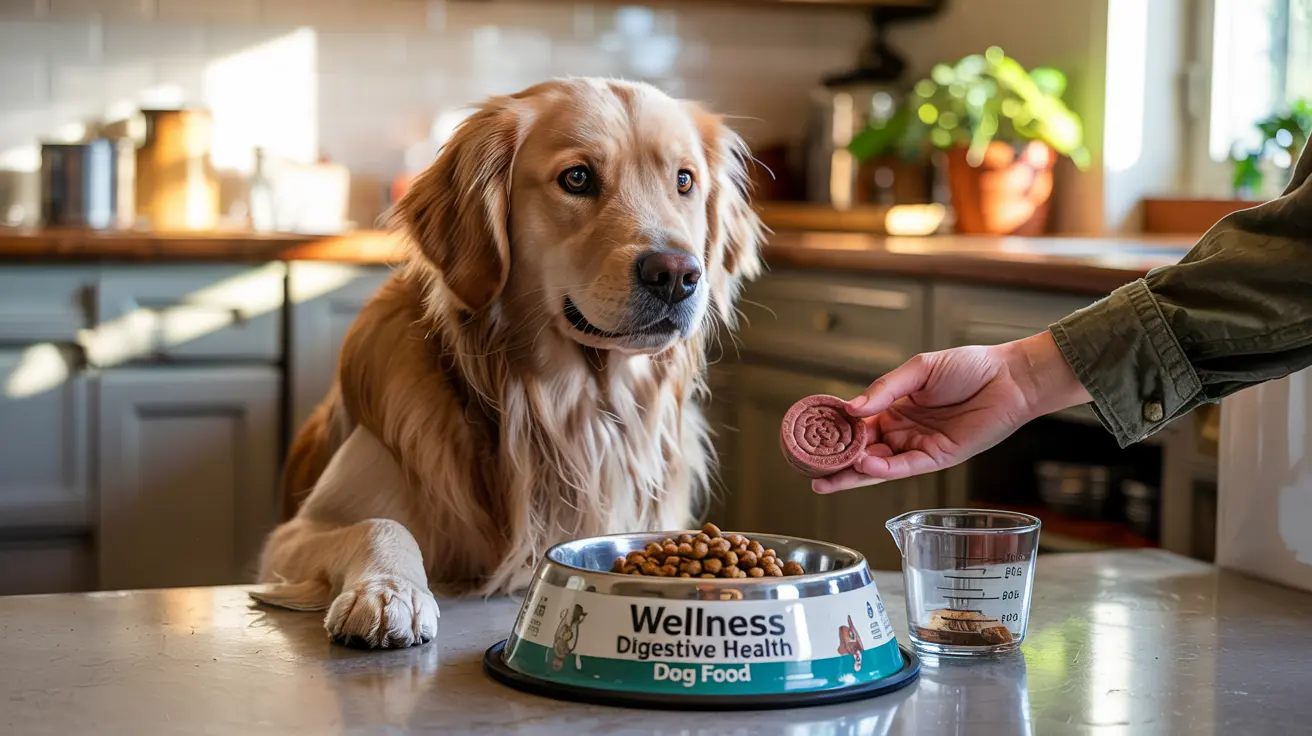
Feeding Tips for Dogs on Wellness Digestive Health Dog Food
Digestive health is vital for your dog’s energy, mood, and overall well-being. If your pup struggles with sensitive digestion, food allergies, or frequent upset stomachs, Wellness Digestive Health Dog Food is a smart choice. This formula is crafted to support gut balance, nutrient absorption, and immune health.
This article offers practical feeding tips to help your dog adjust to and thrive on Wellness Digestive Health Dog Food. Whether you’re switching from another brand or just starting out, these tips ensure a smooth, safe transition.
1. Understand Why Digestive Health Matters
Your dog’s gut influences more than digestion. A healthy digestive system:
-
Absorbs nutrients efficiently
-
Prevents gas, bloating, and diarrhea
-
Boosts immune system response
-
Regulates metabolism
-
Improves coat, skin, and energy levels
Digestive problems in dogs often show as:
-
Loose stools
-
Vomiting
-
Bad breath
-
Excessive gas
-
Loss of appetite
Wellness Digestive Health Dog Food helps address these issues with a tailored blend of prebiotics, fiber, and easily digestible proteins.
2. Know What’s in Wellness Digestive Health Dog Food
This dog food line includes high-quality ingredients like:
-
Prebiotics & probiotics: Support gut flora
-
Pumpkin & oats: Aid smooth digestion
-
Digestible proteins (like chicken or turkey): Reduce strain on the gut
-
No artificial colors or preservatives
-
No corn, soy, or wheat: Reduces allergy risk
Choose the specific formula best suited for your dog’s size, age, and activity level. Options are available for puppies, adults, and seniors.
3. Transition Slowly
Switching dog food too fast can upset your dog’s stomach. Follow the 7-day transition rule:
| Day | New Food | Old Food |
|---|---|---|
| 1–2 | 25% | 75% |
| 3–4 | 50% | 50% |
| 5–6 | 75% | 25% |
| 7+ | 100% | 0% |
Mix both foods in each meal. Watch for signs of intolerance like vomiting, diarrhea, or refusal to eat. If symptoms occur, slow down the switch.
4. Stick to a Feeding Schedule
Dogs thrive on routine. Feed at the same times every day. Most adult dogs eat twice daily—once in the morning and once in the evening. Puppies may need three to four meals per day.
Regular feeding helps:
-
Regulate digestion
-
Prevent overfeeding
-
Improve potty habits
-
Build trust and security
Don’t free-feed. Scheduled meals help monitor intake and reduce the risk of weight gain.
5. Measure the Right Amount
Follow the feeding guide on the bag based on:
-
Weight
-
Age
-
Activity level
-
Health condition
Overfeeding causes obesity, which leads to:
-
Joint pain
-
Diabetes
-
Heart disease
Underfeeding results in:
-
Fatigue
-
Nutritional deficiencies
-
Poor coat and skin
Use a standard measuring cup, and weigh your dog regularly to track weight changes.
6. Ensure Fresh Water Is Always Available
Digestive health relies on hydration. Dogs need water to:
-
Process fiber
-
Digest food
-
Absorb nutrients
-
Stay cool and active
Change water daily. Clean the bowl every few days to prevent bacteria buildup.
If feeding dry kibble, water becomes even more essential. Dehydration can lead to constipation or kidney strain.
7. Avoid Unnecessary Treats and Table Scraps
Table scraps and low-quality treats can disrupt gut health. Stick with:
-
Limited ingredient treats
-
Functional snacks (like probiotic chews)
-
Wellness-branded treats (if compatible)
Avoid:
-
Greasy foods
-
High-fat meats
-
Dairy
-
Chocolate, onions, grapes (toxic!)
Too many treats unbalance nutrition and cause stomach issues.
8. Monitor Poop for Health Clues
Yes, it’s gross—but essential. Your dog’s stool reveals a lot about their health. Look for:
-
Firm, moist, log-shaped stools = Healthy
-
Loose, mushy, or watery stools = Poor digestion
-
Dry, hard pellets = Dehydration or low fiber
-
Mucus or blood = Seek veterinary care
Wellness Digestive Health Dog Food usually improves stool quality within 1–2 weeks.
9. Use a Puzzle Feeder or Slow Bowl
Fast eating causes gulping, gas, and indigestion. Use:
-
Slow-feeder bowls
-
Food-dispensing toys
-
Puzzle mats
These tools:
-
Slow down eating
-
Stimulate the brain
-
Promote better digestion
Great for dogs who eat too quickly or show food aggression.
10. Stay Consistent with the Same Formula
Avoid switching between flavors or brands too often. Sudden changes stress the digestive system. Stick with a formula that works. Only change if:
-
Recommended by your vet
-
Allergic reactions occur
-
Your dog’s age or health needs change
If you switch, follow the transition plan again.
11. Watch for Allergies and Sensitivities
Even with high-quality food, some dogs react to certain ingredients. Look out for:
-
Itchy skin
-
Chronic ear infections
-
Diarrhea or vomiting
-
Scooting
In such cases, switch to a limited-ingredient or grain-free version under the same brand. Consult your vet if symptoms persist.
12. Store Food Properly
Poor storage leads to spoilage and bacterial growth. Store kibble in:
-
Airtight containers
-
Cool, dry places
-
Original bags (inside containers)
Avoid heat and moisture. Always check the expiration date.
13. Supplement Only When Necessary
Wellness Digestive Health formulas are complete and balanced. Supplements are often unnecessary unless:
-
Prescribed by a vet
-
Your dog has a specific deficiency
-
Recommended for aging or performance dogs
Avoid over-supplementing. It can do more harm than good.
14. Don’t Mix with Low-Quality Foods
Mixing Wellness with cheaper brands may:
-
Cancel out digestive benefits
-
Add harmful ingredients
-
Cause stomach upset
If you must mix, use homemade, vet-approved toppers like:
-
Cooked pumpkin
-
Boiled chicken (no skin or fat)
-
Plain rice or oats
Always introduce new ingredients slowly.
15. Check with Your Vet Regularly
Regular check-ups help track your dog’s:
-
Weight
-
Coat condition
-
Stool quality
-
Digestive health
Bring your feeding chart and note any changes. Your vet may adjust food quantity or recommend a different formula.
Bonus Tip: Watch Behavior After Feeding
A happy, healthy dog will:
-
Show good energy
-
Maintain weight
-
Sleep soundly
-
Have clear eyes and a shiny coat
Lethargy, restlessness, or bloating after eating may signal an issue. Keep a feeding journal to track meals and reactions.
Final Thoughts
Feeding your dog Wellness Digestive Health Dog Food is a step toward better gut health, energy, and vitality. Follow these tips to ensure the transition is smooth and your dog gets the full benefit of this premium food.
To recap:
-
Transition slowly
-
Feed on a schedule
-
Measure portions accurately
-
Avoid table scraps
-
Stay hydrated
-
Monitor poop and behavior
-
Consult your vet
A healthy gut leads to a happy pup.



